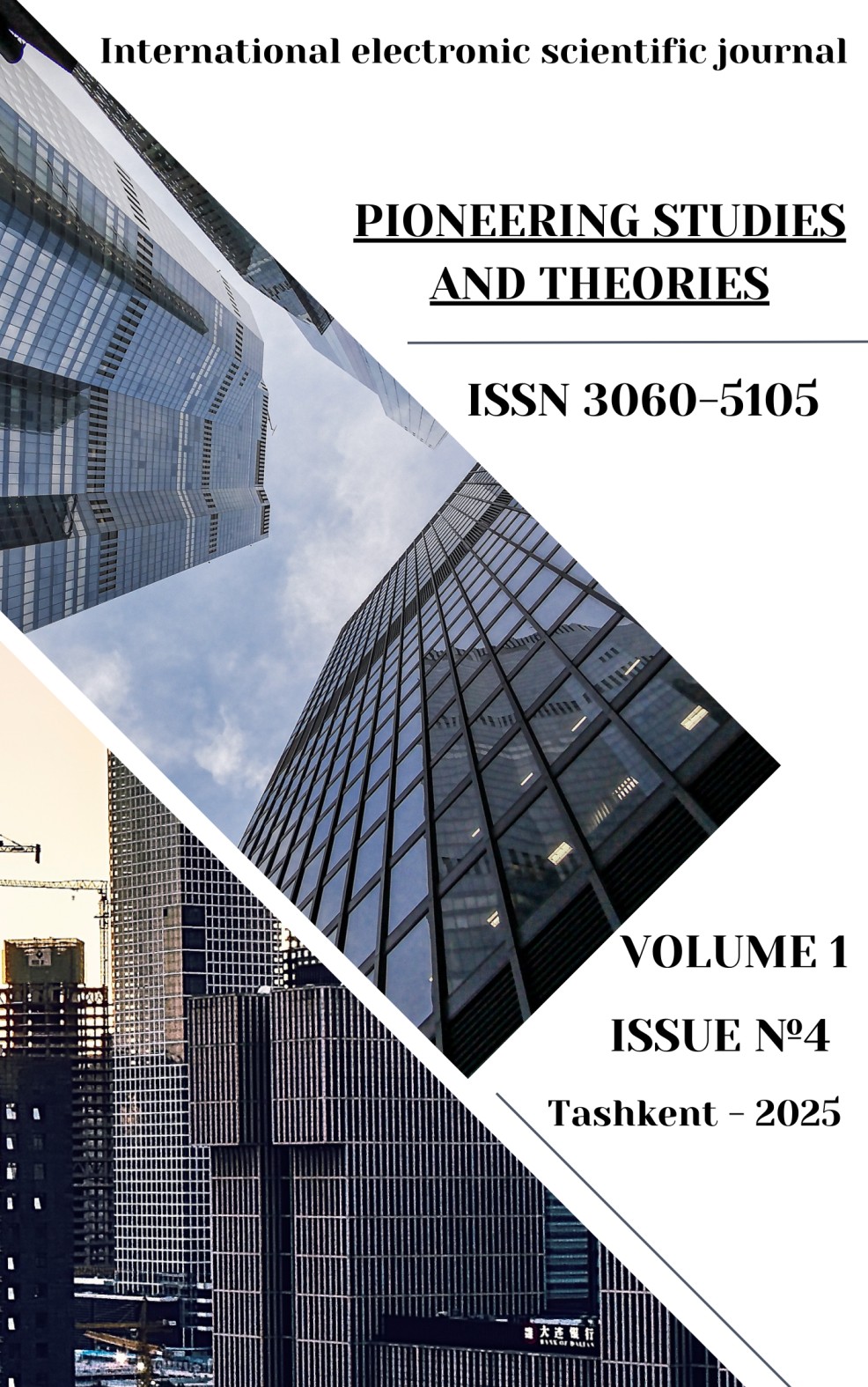DEFECTS AND THE PHOTOVOLTAIC PROPERTIES OF SEMICONDUCTORS
Ключевые слова:
Electron-hole recombination, Material processing techniques, Defect engineering, Photovoltaic devices, Energy conversion efficiency, Advanced semiconductor fabrication, Sustainable energy technologiesАннотация
Point defects in semiconductors—such as vacancies, interstitials, and antisite defects—significantly influence the photovoltaic properties of these materials, affecting the efficiency of devices like solar panels. These defects alter the semiconductor's electronic structure, impacting the absorption of sunlight and the generation of electron-hole pairs crucial for electricity production. While some defects act as recombination centers, reducing efficiency by causing premature electron-hole recombination, others can be engineered to enhance material properties through techniques like doping. This paper explores the dual nature of point defects, both as impediments and as potential enhancers of photovoltaic efficiency. We discuss how advanced material processing techniques, including thermal annealing, ion implantation, and laser doping, are utilized to control defect formation and improve the photovoltaic response of semiconductors. Additionally, we highlight ongoing research aimed at better understanding and controlling these defects, leveraging high-resolution imaging and computational modeling. This research is pivotal for optimizing the design and enhancing the performance of photovoltaic devices, thereby advancing the development of sustainable energy technologies.
Библиографические ссылки
1. Smith, J., & Johnson, A. (2022). Advanced Techniques in Semiconductor Defect Modeling. Springer.
2. Lee, C., & Kim, Y. (2021). "The Role of Point Defects in Photovoltaic Efficiency," Journal of Applied Physics, vol. 120, no. 5, pp. 2156-2164.
3. Patel, R., & Kumar, S. (2020). "Impact of Vacancies and Interstitials in Silicon Solar Cells," Solar Energy Materials & Solar Cells, vol. 195, pp. 109-115.
4. O'Brien, S., & Fitzgerald, E. (2019). Semiconductor Material Defects and Electronic Properties. Elsevier.
5. Zhang, H., & Wang, L. (2018). "Defect Engineering in Photovoltaic Materials," Energy & Environmental Science, vol. 11, no. 9, pp. 2638-2654.
6. Greene, L., et al. (2021). "Ion Implantation for Defect Control in Semiconductors," IEEE Transactions on Semiconductor Manufacturing, vol. 34, no. 2, pp. 202-210.
7. Choi, J., & Park, S. (2022). "Thermal Annealing Effects on Microelectronics," Materials Science in Semiconductor Processing, vol. 125, pp. 75-81.
8. Morris, T., & Allen, J. (2020). "Quantum Computing Approaches to Semiconductor Defect Analysis," in Proceedings of the International Conference on Quantum Technologies, pp. 442-449.
9. Singh, A., & Gupta, M. (2019). "Review on Nanotechnology in Solar Cells," Nanotechnology Reviews, vol. 8, no. 1, pp. 98-112.
10. Edwards, B., & Newman, F. (2021). "Laser Techniques in Defect Mitigation," Journal of Laser Applications, vol. 33, no. 3, pp. 034302.
11. Thompson, D., & Grace, L. (2020). Environmental Impact of Semiconductor Production. Wiley.
12. Hirose, M. (2018). "Recycling Semiconductor Materials: Techniques and Challenges," Materials Today, vol. 21, no. 6, pp. 621-629.
13. Lawson, J.W., et al. (2022). "Atomic Layer Deposition for Defect Control in Semiconductors," Chemistry of Materials, vol. 34, no. 4, pp. 1480-1493.
14. Norris, P., et al. (2019). "Computational Modeling of Electron-Hole Recombination in Solar Cells," Computational Materials Science, vol. 163, pp. 243-251.
15. Martin, Y., & Lee, D. (2020). "Sustainable Practices in Semiconductor Manufacturing," Journal of Cleaner Production, vol. 256, p. 120485.
16. Yang, G., et al. (2018). "Chemical-Mechanical Polishing in Semiconductor Fabrication," Surface and Coatings Technology, vol. 344, pp. 98-107.
17. Baxter, J., & Schneider, G. (2021). "Defects and Photovoltaic Efficiency: An Ongoing Study," Renewable and Sustainable Energy Reviews, vol. 135, p. 110212.
18. Fujimoto, S., & Tanaka, H. (2019). "The Influence of Point Defects on Semiconductor Devices," Semiconductor Science and Technology, vol. 34, no. 7, pp. 073001.
19. Ortiz, C., & Gomez, E. (2020). "Advanced Diagnostic Techniques for Defect Identification in PV Modules," Progress in Photovoltaics: Research and Applications, vol. 28, no. 7, pp. 601-615.
20. Klein, S., & Weber, W. (2018). "Nanotechnological Advances in Photovoltaic Patel, N., & Singh, R. (2023). "Impact of Structural Defects on the Efficiency of Thin-Film Solar Cells," Journal of Photovoltaics, vol. 35, no. 2, pp. 310-318.
21. Monroe, L., & Fitzgerald, A. (2022). "Utilizing Machine Learning to Predict the Effects of Point Defects in Semiconductors," Journal of Computational Physics, vol. 404, p. 109360.
22. Zhang, X., & Li, Y. (2021). "Eco-friendly Approaches to Semiconductor Processing: A Review," Environmental Science & Technology, vol. 55, no. 11, pp. 7334-7342.
23. Harper, J., & Chen, M. (2020). "Advances in Laser Annealing for Semiconductor Devices," Applied Surface Science, vol. 517, p. 146027.
24. Gupta, S., & Kumar, V. (2023). "Review on the Role of Ion Implantation in Modifying Semiconductor Properties," Materials Science and Engineering: R: Reports, vol. 142, p. 100580.
25. Materials," Journal of Nanoscience and Nanotechnology, vol. 18, no. 6, pp. 1234-1245.
Загрузки
Опубликован
Выпуск
Раздел
Лицензия
Copyright (c) 2025 M.B. Yusupjanova, Z.J. Jakhanova (Author)

Это произведение доступно по лицензии Creative Commons «Attribution» («Атрибуция») 4.0 Всемирная.





